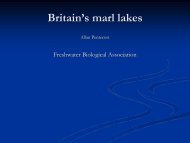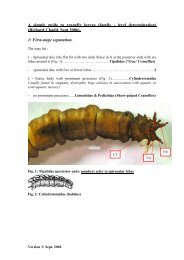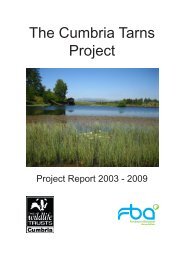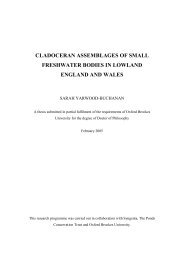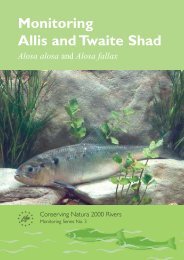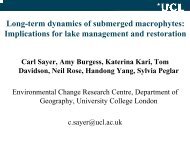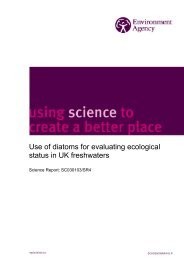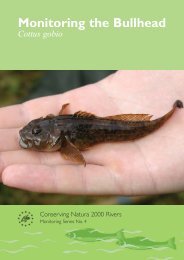Groundwater HIA post edit - FreshwaterLife
Groundwater HIA post edit - FreshwaterLife
Groundwater HIA post edit - FreshwaterLife
You also want an ePaper? Increase the reach of your titles
YUMPU automatically turns print PDFs into web optimized ePapers that Google loves.
2 Basic concepts<br />
2.1 Introduction<br />
Before delving into the detail of the <strong>HIA</strong> methodology, it is useful to discuss some basic<br />
concepts that are fundamental to <strong>HIA</strong>, namely uncertainty, risk, and conceptual<br />
modelling. This section also deals with some common misconceptions about the way<br />
in which groundwater abstractions behave. Unfortunately, there is no magic tool for<br />
assessing the hydrogeological impacts of groundwater abstraction; the emphasis is on<br />
developing good conceptual models, taking uncertainty and risk into account, and<br />
using appropriate tools and techniques to answer specific questions.<br />
2.2 Uncertainty and risk<br />
The Environment Agency’s approach to environmental risk assessment is based on the<br />
guidelines published by the Government (DETR 2000). In these guidelines, the<br />
following definitions are given:<br />
Hazard: a property or situation that in particular circumstances could lead<br />
to harm.<br />
Risk: a combination of the probability (or frequency) of occurrence of a<br />
defined hazard and the magnitude of the consequences of the occurrence.<br />
In groundwater abstraction licensing, the hazard is the act of abstracting water, and the<br />
risk relates to potential impacts on the environment, or other impacts such as<br />
derogation of the rights of existing abstractors. In order to evaluate and use risk<br />
assessments effectively as a credible basis for decision-making, it is important to<br />
understand how different sources of uncertainty contribute to the final risk estimates.<br />
Uncertainty can affect all stages of risk assessment, and environmental scientists are<br />
increasingly being required to provide information on how certain their decisions are.<br />
Analysing the sources and magnitudes of uncertainties can help to focus discussion,<br />
identify knowledge gaps, and feed into decisions about risk management.<br />
Uncertainties generally fall into the following categories (DETR 2000):<br />
• Model uncertainty: where models provide only an approximation of the<br />
real environment. Model uncertainty may have two components: (i)<br />
conceptual modelling uncertainty due to insufficient knowledge of the<br />
system; and (ii) mathematical model uncertainty arising from the limitations<br />
of the model selected in accurately representing reality.<br />
• Sample uncertainty: where uncertainties arise from the accuracy of<br />
measurements or the validity of the sample (number and location of<br />
sampling points).<br />
• Data uncertainty: where data are interpolated or extrapolated from other<br />
sources.<br />
• Knowledge uncertainty: where there is inadequate scientific<br />
understanding of the processes involved.<br />
• Environmental uncertainty: where the inherent variability of the natural<br />
environment leads to errors in our approximations. For groundwater<br />
4 Science Report – Hydrogeological impact appraisal for groundwater abstractions






